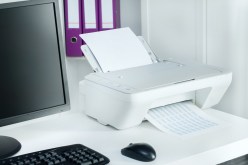Chemical Solutions: What Works Best to Remove Sticky Tape Residue?
Sticky tape residue can be a persistent and frustrating problem, especially when it comes to removing it from delicate surfaces. Whether you’re dealing with residue left behind by duct tape, masking tape, or any other type of adhesive tape, finding an effective solution is crucial. In this article, we will explore various chemical solutions that work best in removing sticky tape residue. From household items to specialized products, we’ve got you covered.
Rubbing Alcohol: A Versatile Solution
When it comes to removing sticky tape residue, rubbing alcohol is a tried and tested solution that often works wonders. It is readily available in most households and can effectively dissolve the adhesive properties of the residue. To use rubbing alcohol for this purpose, simply dampen a cloth or cotton ball with the alcohol and gently rub the affected area in circular motions. The alcohol will break down the glue-like substance left by the tape, making it easier to remove.
Goo Gone: A Specialized Product
Goo Gone is a popular product specifically designed for removing sticky residues of all kinds. It contains powerful citrus-based solvents that effectively break down adhesives without damaging surfaces. To use Goo Gone, apply a small amount directly onto the residue and let it sit for a few minutes. Then, using a cloth or sponge, gently scrub away the residue until it lifts off completely. Rinse the surface with soap and water afterward to remove any remaining product.
WD-40: An Unexpected Solution
While WD-40 is commonly known as a lubricant and rust remover, it can also be surprisingly effective at removing sticky tape residue. Its unique formula helps dissolve adhesives without causing harm to most surfaces. To use WD-40 for this purpose, spray a small amount onto the affected area and let it sit for about 5 minutes to allow the solution to penetrate the residue. Then, using a cloth or sponge, gently wipe away the residue until it is completely gone. Wipe the surface clean with soap and water afterward to remove any residue from the WD-40.
Acetone: A Strong but Cautionary Solution
Acetone, commonly found in nail polish removers, is a potent solvent that can effectively remove sticky tape residue. However, caution must be exercised when using acetone as it can damage certain surfaces such as plastic or painted materials. Before using acetone, test it on a small inconspicuous area to ensure compatibility. If the surface is safe to use acetone on, apply a small amount onto a cloth and gently rub the residue until it dissolves. Remember to rinse the area thoroughly with soap and water afterward.
In conclusion, removing sticky tape residue can be done effectively with various chemical solutions. Rubbing alcohol is a versatile option found in most households, while specialized products like Goo Gone are specifically designed for this purpose. Surprisingly, WD-40 can also work wonders in dissolving adhesives, although its primary use lies elsewhere. Lastly, acetone should be used cautiously and only on surfaces that are compatible with this strong solvent. With these chemical solutions at your disposal, you can bid farewell to stubborn sticky tape residues and restore surfaces back to their original state effortlessly.
This text was generated using a large language model, and select text has been reviewed and moderated for purposes such as readability.






